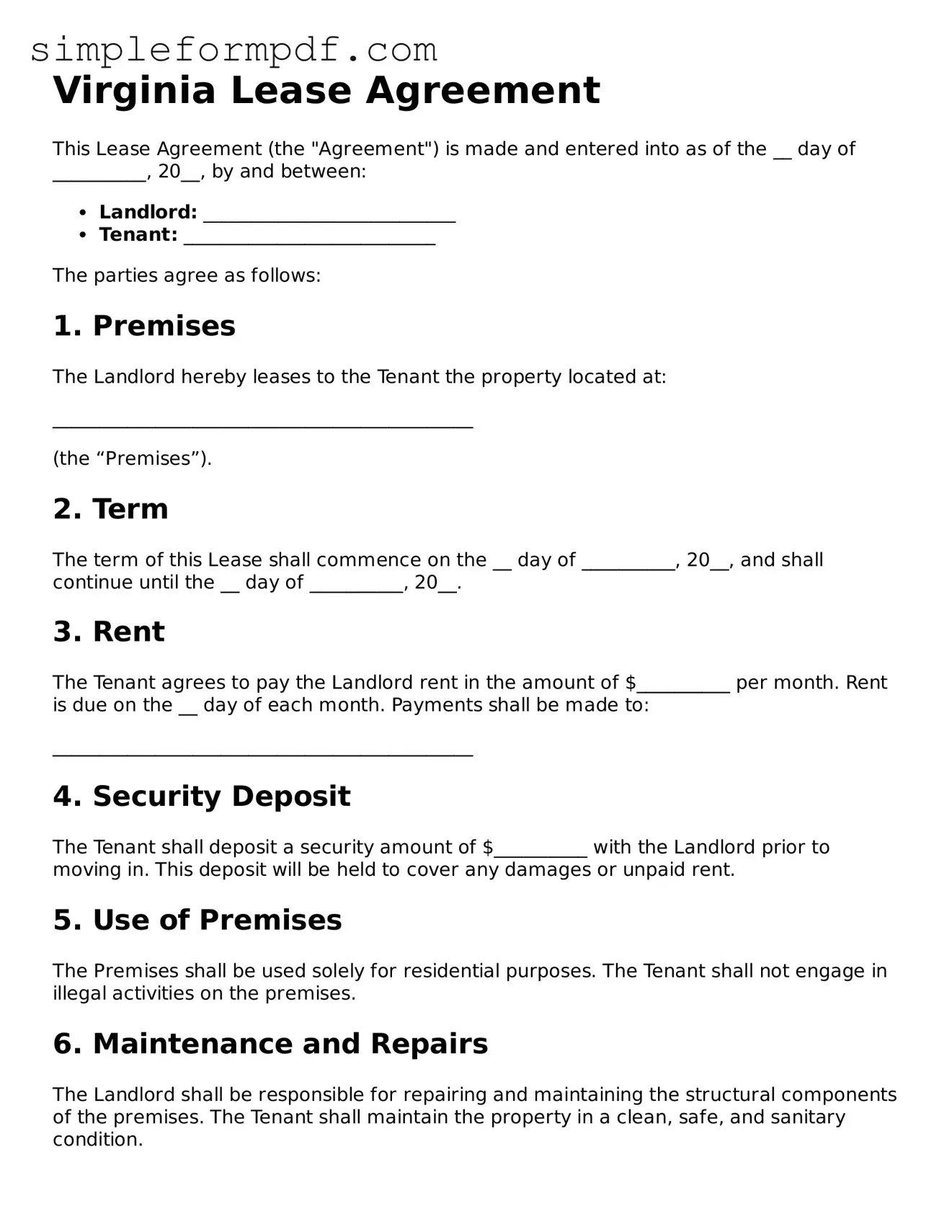Virginia Lease Agreement
This Lease Agreement (the "Agreement") is made and entered into as of the __ day of __________, 20__, by and between:
- Landlord: ___________________________
- Tenant: ___________________________
The parties agree as follows:
1. Premises
The Landlord hereby leases to the Tenant the property located at:
_____________________________________________
(the “Premises”).
2. Term
The term of this Lease shall commence on the __ day of __________, 20__, and shall continue until the __ day of __________, 20__.
3. Rent
The Tenant agrees to pay the Landlord rent in the amount of $__________ per month. Rent is due on the __ day of each month. Payments shall be made to:
_____________________________________________
4. Security Deposit
The Tenant shall deposit a security amount of $__________ with the Landlord prior to moving in. This deposit will be held to cover any damages or unpaid rent.
5. Use of Premises
The Premises shall be used solely for residential purposes. The Tenant shall not engage in illegal activities on the premises.
6. Maintenance and Repairs
The Landlord shall be responsible for repairing and maintaining the structural components of the premises. The Tenant shall maintain the property in a clean, safe, and sanitary condition.
7. Termination
Upon expiration, either party may terminate this Agreement by providing written notice at least 30 days prior to the desired termination date.
8. Governing Law
This Agreement shall be governed by the laws of the Commonwealth of Virginia.
IN WITNESS WHEREOF
The parties hereto have executed this Lease Agreement as of the day and year first above written.
Landlord Signature: ___________________________ Date: ___________
Tenant Signature: _____________________________ Date: ___________
